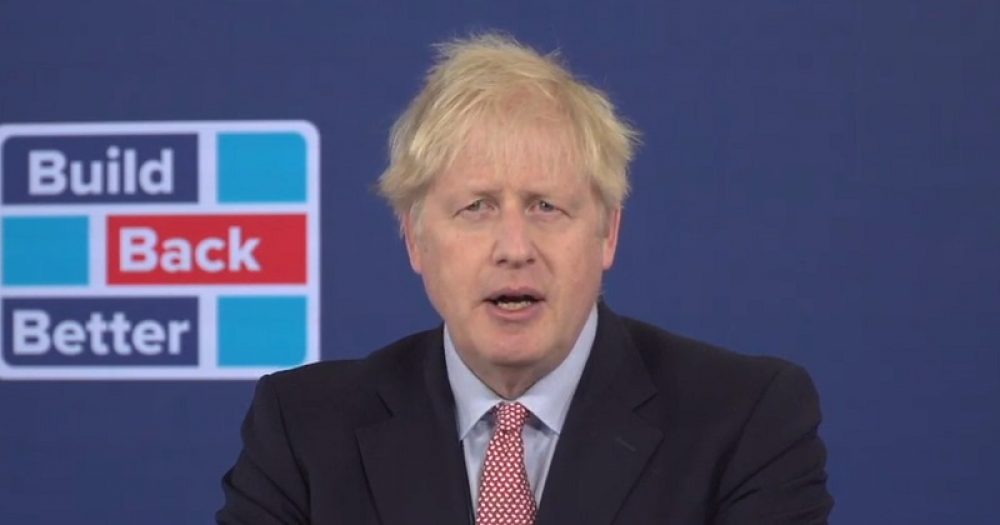Fewer than one in five teachers want schools to close, but over two in five think rotas should be enacted, a new poll has found.
A survey of over 8,000 school staff by Teacher Tapp found that just 17 per cent wanted schools to close to all except the children of keyworkers and vulnerable pupils if the Covid situation does not improve.
A campaign by the National Education Union calling for schools to be closed in the national lockdown due to start later this week has now amassed over 150,000 supporters.
The poll is yet to be statistically weighted, so the final results may shift slightly, but it appears to show that teachers don’t support lockdown calls.
However 43 per cent of respondents did favour the introduction of rotas to enable smaller classes. Meanwhile 25 per cent supported only allowing certain year groups to remain in school. Eleven per cent said schools should remain “completely open”.
The poll comes as ministers face growing pressure to say what, if any, additional restrictions will be placed on schools during the upcoming month-long lockdown.
The i newspaper reported that scientists advising the government urged secondary schools are closed as part of the national lockdown.
But Boris Johnson, the prime minister, today spoke of the country’s “moral duty” to keep schools open, and claimed his government was “massively expanding testing for schools”.
But the government is yet to say whether all schools will move to a different tier of its “contain” framework. Tier 1, currently in place in areas under local lockdowns, requires the wearing of face coverings in communal areas of schools. Tier 2 would see the introduction of rotas for secondary school pupils.
The NEU, which mostly represents classroom teachers, has called for schools to be closed to all but the most vulnerable pupils and the children of keyworkers during the lockdown, which will begin at 12.01am Thursday and last until December 2.
The union has pointed to Office for National Statistics data, which shows that 1 per cent of primary school-age pupils and 2 per cent of secondary school-age pupils have the virus, with older teenagers. The ONS has warned that infection rates “appear to be steeply increasing among secondary school children”.
But leadership unions the NAHT and ASCL believe the government is right to keep schools open.
However, ASCL general secretary Geoff Barton said on Saturday that rising infection rates “may mean that some restrictions will become necessary sooner rather than later, such as implementing the rota system in secondary schools suggested in the government’s own contingency planning”.
“The government needs to set out the circumstances which would trigger such restrictions in order to provide clarity and confidence – for pupils, parents and staff – that it has a robust and responsive plan in place.”
Vic Goddard, co-principal of Passmores Academy in Essex, said rotas were “inevitable”, and added that his school would “certainly be planning to do that so we can maintain contact and safety unless there’s a significant change in infections etc”.
The government also faces questions about whether school staff considered clinically vulnerable or extremely vulnerable should continue to go to work.
Johnson has said that although shielding guidance for those groups will not be brought back in as it was earlier in the year, those who are more at-risk should work from home. However, it is not clear whether this applies to school staff.
Paul Whiteman, the NAHT’s general secretary, warned of “considerable ambiguity” on the issue, and said he’d sought “urgent clarification” from the government.
“As infection rates increase across communities it is inevitable that more staff will be forced to isolate at home, making it increasingly likely that more schools will be forced to close for some or all pupils.”
It comes as a group of parents is threatening to keep their children at home on Thursday.
The BRITUS: Parents United group says its strike has been organised because they have safety concerns. They say schools should only be open to vulnerable and key worker children.
Asked today about problems with children repeatedly being sent home because of positive cases in their schools, Johnson said the government was “rolling out mass testing” in order to “isolate the positive cases and liberate the negative to allow children to remain in school as much as possible”.
Asked about Johnson’s claims to be increasing testing in schools, Downing Street said he was referring to the rollout of new rapid testing kits, which have been trialed in schools in Lewisham and Salisbury. A spokesperson said wider rollout was planned for the “coming weeks”, but gave no further detail on timeframe.





If lockdown had been imposed two weeks ago and half term extended to two weeks, this would have been possibly shorter and more effective than the present four week lockdown (with possible extension according to Michael Gove).
That said, we have to find a way of living with this virus without continual impose/release lockdowns.
Schools needed a nationwide plan to erect temporary classrooms in the same way as Nightingale hospitals and a campaign to recruit extra teachers. This didn’t happen. They and their pupils need a respite from testing: abandon phonic screening and SATs; reduce the emphasis on exams at 16 and move towards graduation at 18.
“if” and “possibly” and 20/20 hindsight – always easy to lob around hypotheticals. I would suggest the true fact is that nobody can have any real certainty.
You’re right. No-one can have any certainty. However, it’s not hindsight which says we must find a way of living with this virus so we can live life as normally as possible (ie Plan B). But we have a government lurching from one thing to another and usually too late. For an idea of how to manage this, see latest edition of Private Eye describing how Taiwan has coped with the pandemic.
And a month ago everyone was pointing to the Czech Republic as an example of how the virus should be managed. Fast forward to today and they are the worst country in Europe.
Sweden’s the classic example. First portrayed as dangerous lunatics for their approach, then lauded as visionaries, then back to foolhardy and back and forth many times.
In ten years’ time we’ll look back and be able to say which country had the right approach. Until then we’re making snap judgements based on a single moment in time that may end up looking very silly in the long run.